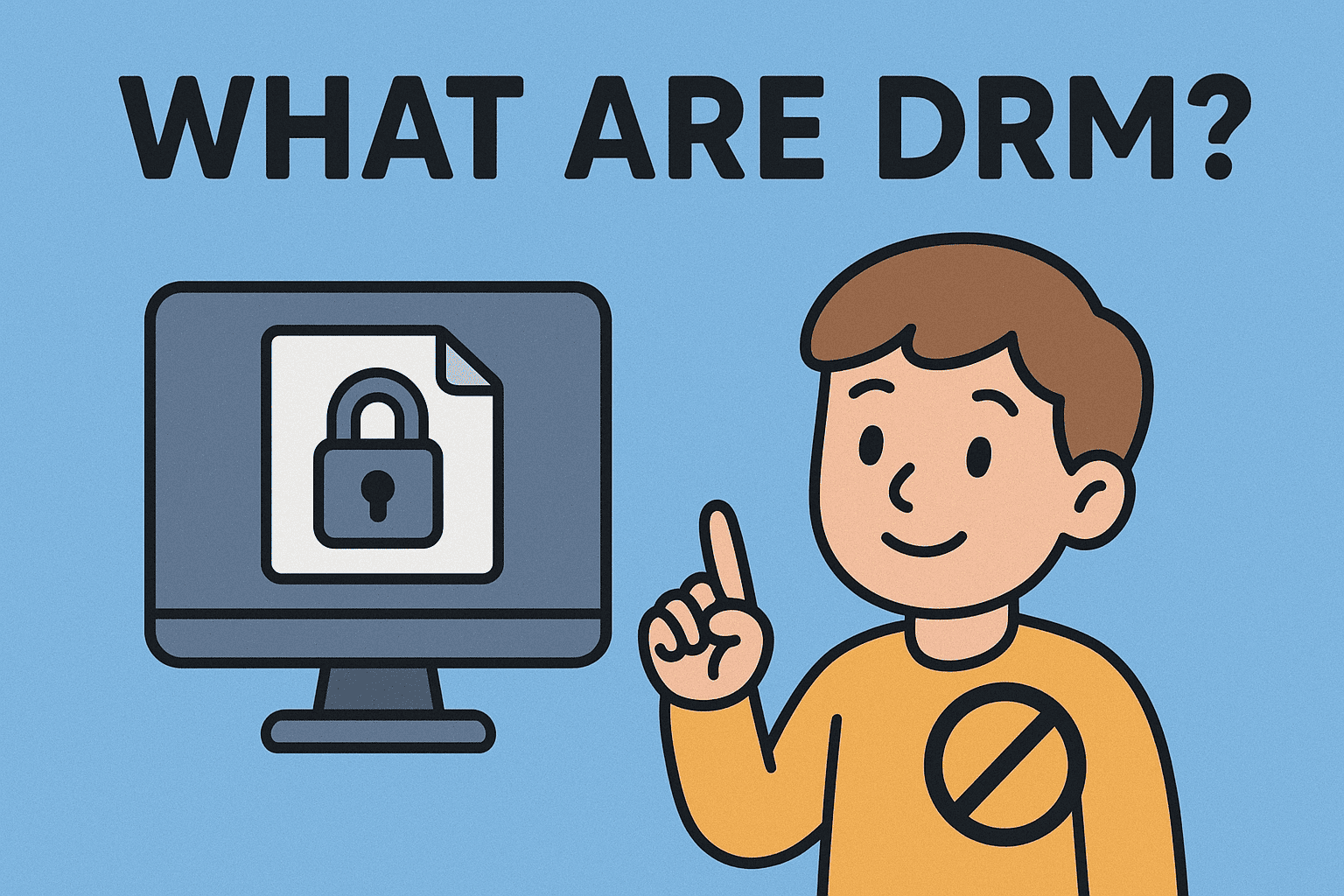Updated on September 23, 2025, by OpenEDR
Have you ever purchased a movie online but couldn’t play it on another device? Or downloaded an eBook only to find it restricted from copying or sharing? These limitations are enforced by DRM. But what are DRM exactly, and why do they matter for businesses and consumers alike?
Digital Rights Management (DRM) is a technology used to control access, usage, and distribution of digital content. It protects intellectual property, prevents piracy, and ensures compliance with licensing agreements. From streaming platforms like Netflix to corporate environments managing sensitive documents, DRM is everywhere.
In this article, we’ll explore what DRM are, how they work, their advantages and disadvantages, and why modern organizations must integrate them into broader cybersecurity strategies.
What Are DRM?
DRM, short for Digital Rights Management, refers to a set of tools and technologies designed to regulate how digital content is accessed, shared, and distributed.
The main goals of DRM are:
Preventing unauthorized copying or sharing of digital media.
Ensuring only licensed users can access content.
Protecting intellectual property and revenue streams.
DRM is commonly used in industries like media, publishing, software development, and enterprise security.
How DRM Works
At its core, DRM applies encryption and licensing mechanisms to digital files. Here’s how it typically works:
Content Encryption – Files (eBooks, music, software) are encrypted to prevent unauthorized access.
License Keys or Certificates – Users must obtain a license or authentication token to access the file.
Usage Restrictions – DRM can limit printing, copying, file sharing, or the number of devices a file can be accessed from.
Monitoring and Revocation – Providers can revoke access if terms are violated.
👉 Example: When you stream a movie on Netflix, DRM ensures you can watch it but can’t download and share it freely.
Types of DRM
DRM solutions vary depending on the industry and use case:
1. Media DRM
Protects movies, music, and streaming services.
Example: Spotify, Netflix, Apple Music.
2. eBook DRM
Prevents unlimited copying and distribution of eBooks.
Example: Amazon Kindle.
3. Software DRM
Ensures only licensed users can run applications.
Example: Microsoft Windows activation.
4. Enterprise DRM (E-DRM)
Protects sensitive corporate documents.
Example: Encrypting contracts, financial records, or R&D files.
Why DRM Matters in Cybersecurity
For IT managers and executives, DRM goes beyond media protection. In business, it plays a crucial role in:
Preventing insider threats – Employees can’t copy or share sensitive files freely.
Maintaining compliance – Industries like healthcare (HIPAA) and finance (GDPR, PCI DSS) require controlled access to data.
Protecting intellectual property – From trade secrets to proprietary software.
Enabling secure collaboration – Partners and remote employees can access documents safely.
Benefits of DRM
Organizations and individuals benefit from DRM in several ways:
🔒 Stronger Data Protection – Prevents leaks and unauthorized sharing.
📊 Regulatory Compliance – Meets legal requirements for secure information handling.
💼 Business Continuity – Reduces risks of data theft and loss.
💰 Revenue Protection – Stops piracy and protects content creators.
Drawbacks of DRM
While DRM has advantages, it also faces criticism:
🚫 User Restrictions – Can frustrate legitimate customers (e.g., limits on devices).
🔑 License Management Overhead – Managing keys and certificates can be complex.
🛠️ Compatibility Issues – Files may not open across all platforms.
💸 Implementation Costs – Especially for enterprises.
👉 For businesses, the solution lies in balancing security with usability.
Best Practices for Implementing DRM
For businesses considering DRM, here are best practices:
Use Enterprise DRM (E-DRM) to protect internal documents.
Integrate with Zero Trust Security – Assume every user/device must be verified.
Automate License Management – Avoid expired or invalid licenses causing downtime.
Educate Employees – Ensure staff understand why DRM is in place.
Combine DRM with Endpoint Security – Strengthen overall protection.
FAQ: What Are DRM?
Q1. What does DRM stand for?
DRM stands for Digital Rights Management, a system for controlling access and usage of digital content.
Q2. Why is DRM controversial?
While it protects intellectual property, DRM often frustrates users by limiting sharing or device compatibility.
Q3. How does DRM help businesses?
It prevents data leaks, enforces compliance, and protects intellectual property.
Q4. Is DRM used only in media?
No. DRM is also vital in enterprise cybersecurity, protecting corporate documents and sensitive data.
Q5. Can DRM be bypassed?
Unfortunately, yes. Hackers often try to crack DRM, which is why businesses should combine it with multi-layered security solutions.
Conclusion
So, what are DRM? In short, they are technologies that control how digital content is accessed, shared, and protected. While DRM started in media and entertainment, it is now a crucial tool in enterprise cybersecurity for safeguarding intellectual property, sensitive data, and compliance.
However, DRM alone isn’t enough. Organizations must integrate endpoint protection, Zero Trust, and advanced monitoring to build a resilient defense against modern cyber threats.
👉 Take control of your digital assets today. Strengthen your business security with OpenEDR’s advanced endpoint protection solutions. Register Free to explore the future of enterprise security.
